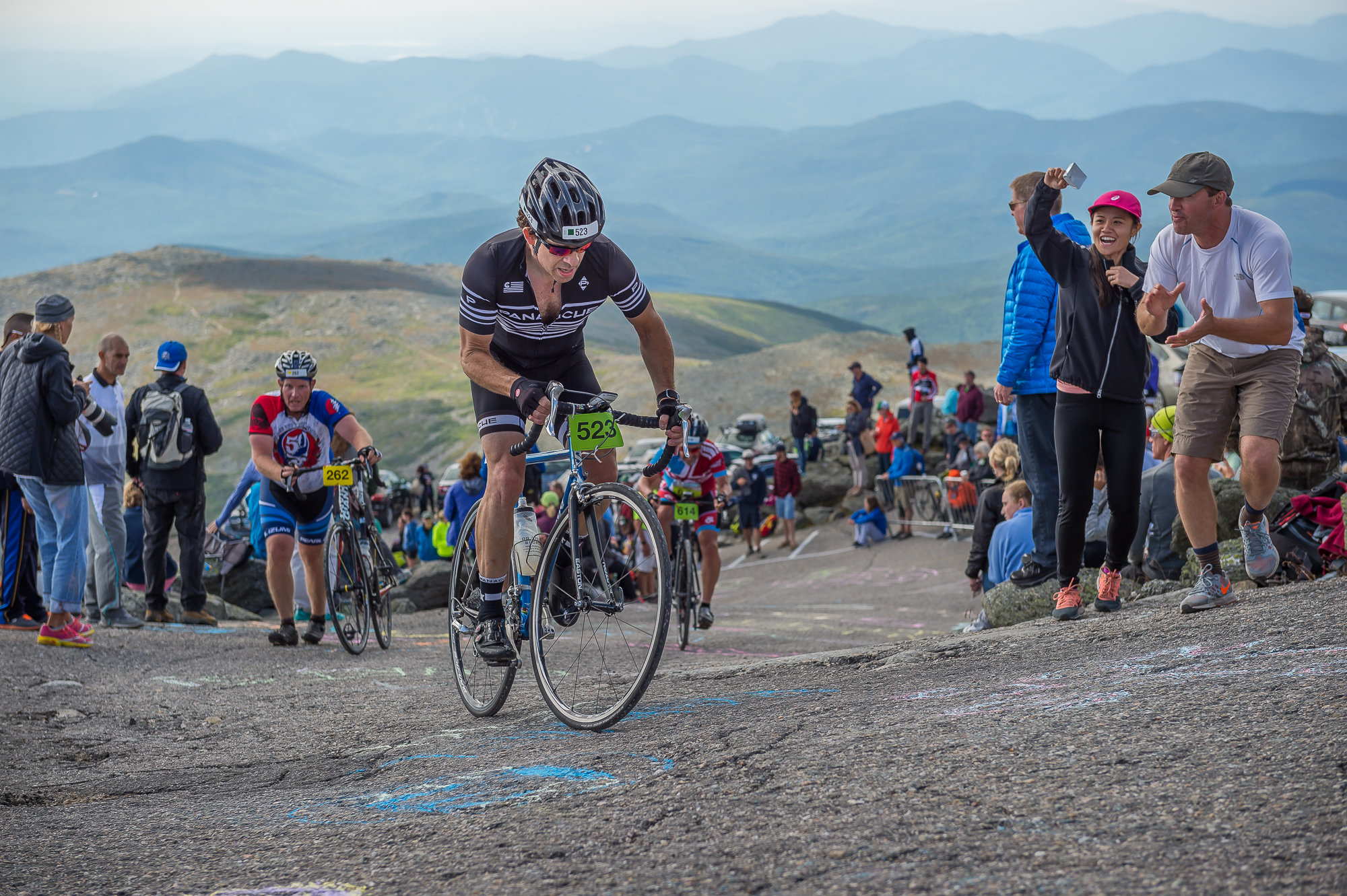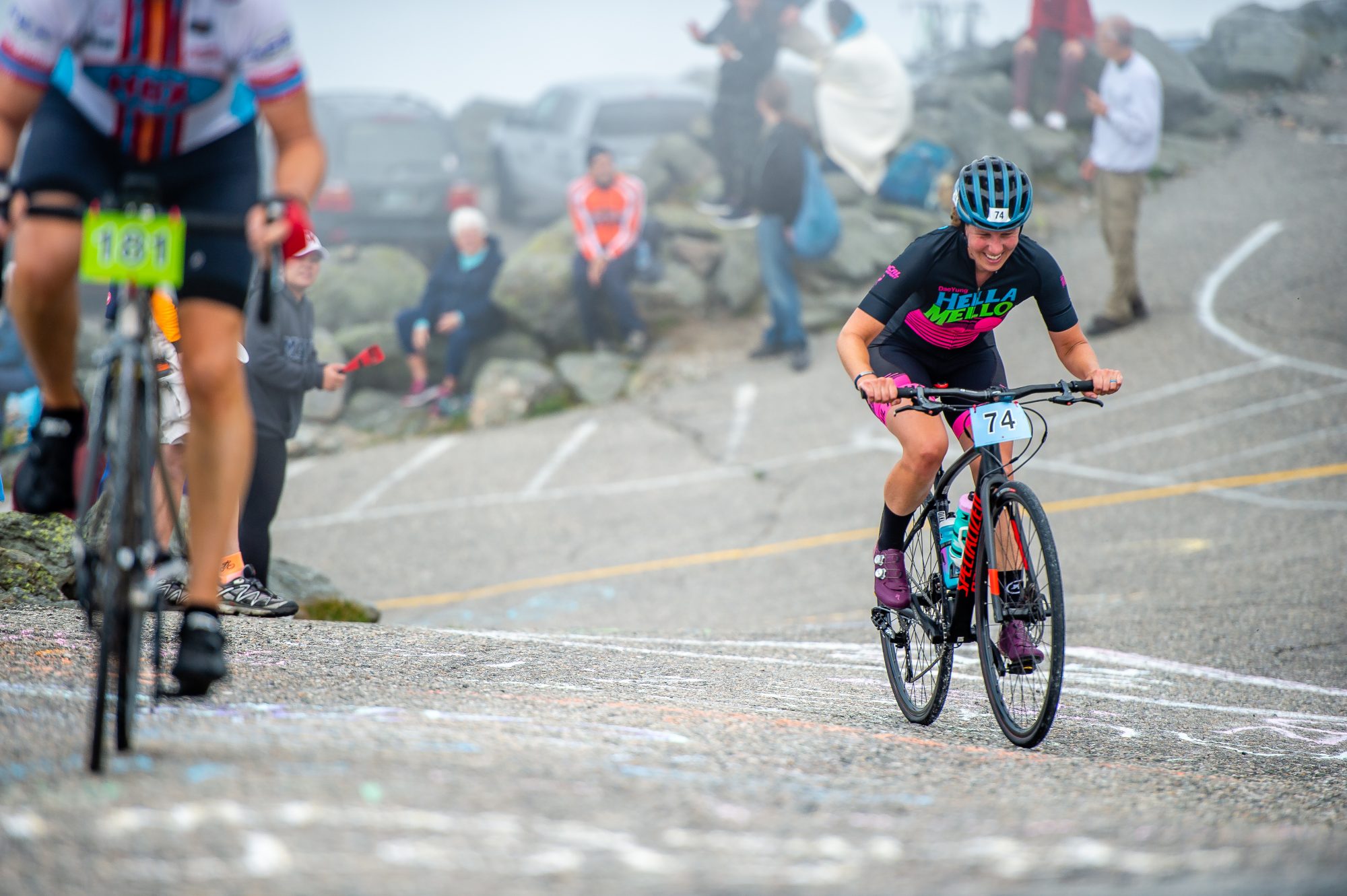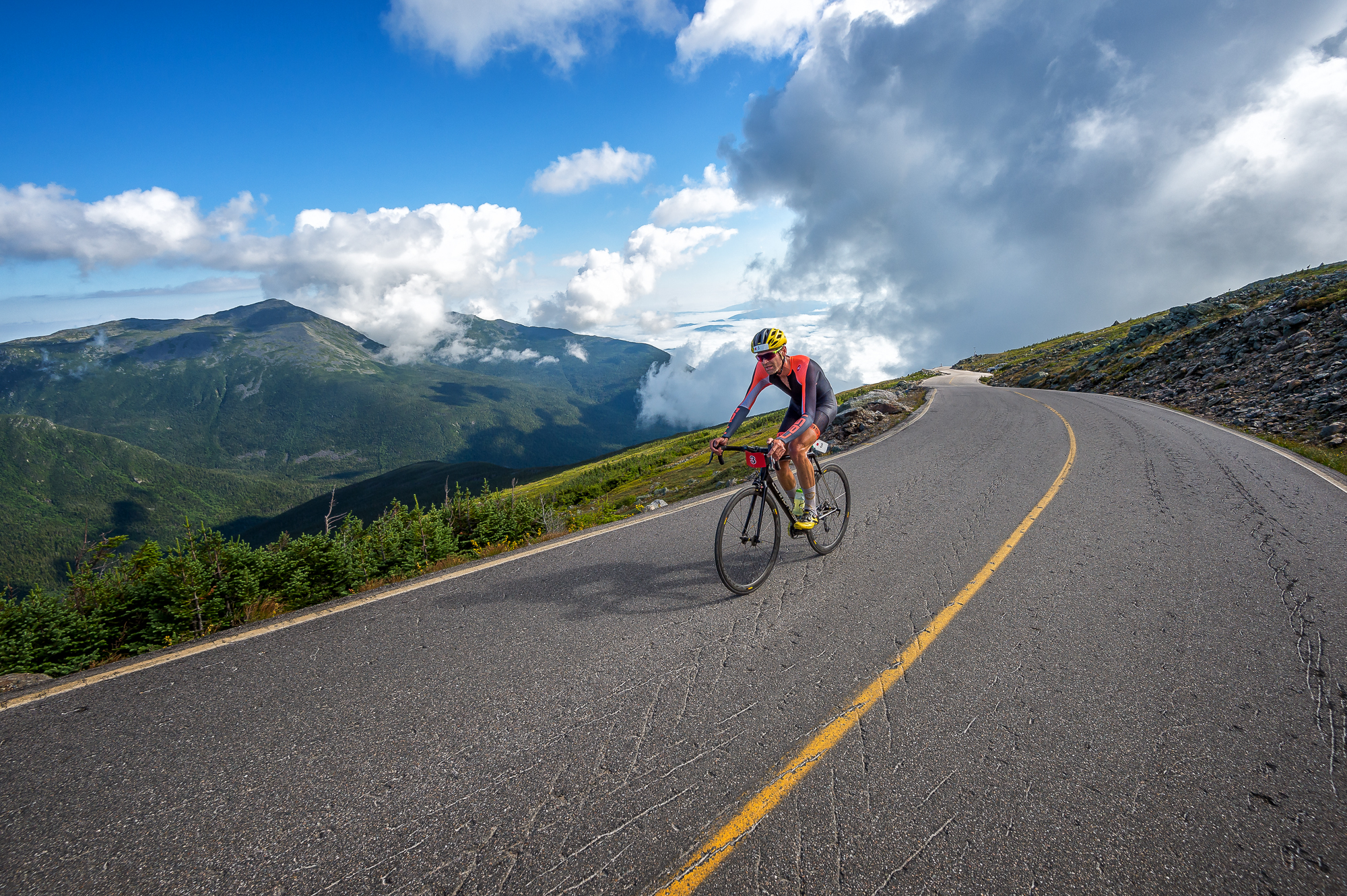The more than seven-mile ascent of Mount Washington via the Mount Washington Auto Road consistently ranks as one of the hardest hill climbs for cyclists in the U.S., if not the world. Credit that to an average grade of 12%, extended sections of 18%, and the final stretch checking in at a whopping 22%. Just how tough is it? The Mt. Washington Auto Road Bicycle Hillclimb (MWARBH), an annual bike race run by the Tin Mountain Conservation Center, is the only climb open to the cycling public in the U.S. that averages a grade over 10% over five miles.
Now on its 50th anniversary, the MWARBH attracts hundreds of cyclists, drawn to the challenge of riding their bikes to almost 6,300 feet and the highest peak in the Northeast. According to Dawson Winch, Marketing and Communications Director for Tin Mountain Conservation Center, “the grade of the road combined with Mount Washington’s notorious weather makes it quite the challenge.” Nonetheless, riders return year after year to ascend the Rock Pile, with this year’s Hillclimb scheduled for August 19th.

History of the Mt. Washington Auto Road Bicycle Hillclimb
While the Hillclimb captivates riders and spectators alike, that wasn’t always the case. Originally known as the Mount Washington Invitational Hillclimb, the race drew just nine participants in 1973, its first year. Interest wasn’t the only difference between now and then. In 1973, the road was close to 80% dirt, didn’t close to cars, and participants had to ride back down the mountain after the race. The winner of the inaugural event was John Allis, who by that time was a three-time Olympian. Allis would go on to win the following year as well, knocking roughly 13 minutes off of his original time.
In 1991, Tin Mountain Conservation Center, a non-profit dedicated to educating groups on the natural environment, took over hosting and fundraising for the event. Today, next to sponsors and supporters, riders can opt to pay a portion of their registration fee and fundraise the rest, with some having raised thousands over the years. Proceeds go to Tin Mountain programs, including their almost 100 year-round nature programs and naturalist-led field trips, as well as the general running of Tin Mountain.
MWARBH 50th Anniversary Year
This August 19, riders will push off and up the Auto Road to 6,288 feet and John Allis will be in attendance. Allis is spectating this year, but a fellow cyclist from the 1973 Invitational is planning on riding in the race. Bill Humphreys, 79, who tackled the Mount Washington Invitational Hillclimb with Allis in 1973 and 1974 is among the 635 registered riders this year. The two men were once team members on the “Raleigh Boys,” the first U.S. team to race a stage race in Europe.
Registrations for the MWARBH tend not to go much higher than 600, mainly because of parking at the top of the mountain. “Riders aren’t allowed to ride their bikes down, so everyone who rides up has to come down in a car,” says Winch. “That’s really the limiting factor—how many cars we can fit in on the summit. And, we shoehorn them in!”
On race day, the Auto Road closes to automobile traffic at 8:00 a.m. and remains closed until 12:00 p.m., or whenever deemed safe to open to downward traffic. The race begins at 8:30 a.m. with the departure of the first wave of riders. At 8:55 a.m., the sixth and final wave sets off up the mountain.

How to Watch the Mt. Washington Auto Road Bicycle Hillclimb
Due to Mount Washington’s unpredictable weather, logistically it is difficult to station cameras along the race route. Therefore, there is no remote way to catch the MWARBH. If you want to witness the action, you have to be on the mountain. The beginning of the Auto Road and the end at the summit of Mount Washington are the obvious and popular viewing spots.
Those willing to hike can find less-crowded spots to catch the action. Lowe’s Bald Spot is a good option—the roughly four-mile round trip hike leaving from Pinkham Notch Visitor’s Center offers mostly moderate terrain with a few steep sections and delivers a unique perspective of the Auto Road along with Mount Madison and three of the five Adams family of mountains.
The Nelson Crag Trail is another option for those looking to hike to a spot and view the race. Hikers most commonly connect with the Nelson Crag Trail after departing Pinkham Notch on Old Jackson Road, which is part of the Appalachian Trail. The Nelson Crag Trail is one of the less-traveled paths on Mount Washington which ensures solitude and, since it hugs the Auto Road at roughly 5,000 feet, provides a good view of the race.
Those looking for a challenge themselves can take the Huntington Ravine Trail to its intersection with the Auto Road, a little under a half-mile from the summit. Huntington Ravine is one of the steepest and most exposed hikes in the Whites and is best attempted by experienced hikers; its fearsome reputation has earned it a place in the Terrifying 25 list, a collection of hikes known for their rugged terrain and challenging nature.
The Draw of the MWARBH
The MWARBH has come a long way since its nine initial riders. Today, it draws an international field—riders in the past have come from nearby countries like Canada to far-flung destinations like Botswana and New Zealand. Despite the race’s tough reputation, almost 100 people have ridden it more than 10 times. There’s even a name for them: Rockpilers. “If they’re not riding, people know someone who is, or are in clubs riding or supporting riders,” says Winch. “They are the race. We handle logistics, but it’s the people who make the race.”

The MWARBH
The Mt. Washington Auto Road Bicycle Hillclimb is an inspiring event—no matter if it gets you excited to start training for next year’s event, hike to a remote viewing area to watch the action, or simply stand at the finish to take in the astounding effort of the participants. Add it to your bucket list of must-attend New England events!
Ethan Gresko
Ethan is a New York State native who enjoys day hikes between the Adirondacks and Hudson Valley, to the Finger Lakes. He loves the written word, is an aspiring 46er, and a firm believer that you have to go down before you go up!
Related Posts
April 12, 2024
Explore Like a Local: The Outdoor Mecca of North Conway, NH
There's a lot to love about this New…
April 3, 2024
5 Things To Do in the Boston Area During Mud Season
Adventure opportunities are abundant…




